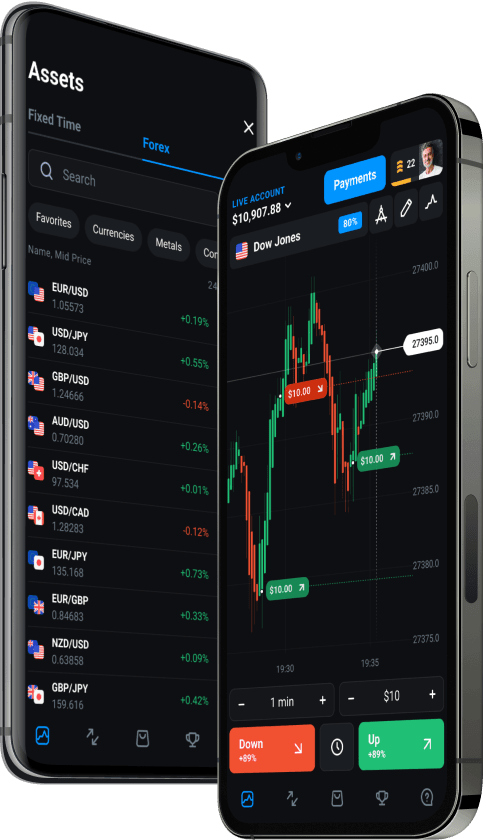Forex trading, also known as foreign exchange trading or currency trading, is a global marketplace where currencies are bought and sold. It is one of the largest and most liquid financial markets in the world. For anyone looking to delve into the world of forex trading, understanding the fundamentals is essential. This article will cover the basics of forex trading, including its market structure, key concepts, and the strategies employed by traders.

Introduction to Forex Trading
Forex trading involves the exchange of one currency for another at an agreed-upon exchange rate. Unlike other financial markets, the forex market operates 24 hours a day, five days a week, offering continuous trading opportunities. The primary aim is to profit from the fluctuations in currency exchange rates. Traders buy and sell currency pairs, betting on the future direction of currency movements.
Market Structure
The forex market is decentralized, meaning that it does not have a central exchange like the stock market. Instead, it operates through a network of banks, brokers, and financial institutions. Here’s a breakdown of the key players:
- Central Banks: They influence the forex market through monetary policies and currency interventions.
- Commercial Banks: Major banks conduct forex trading for themselves and their clients.
- Brokerage Firms: They provide platforms for retail traders to access the forex market.
- Retail Traders: Individuals who trade currencies through brokers.
Key Concepts in Forex Trading
To navigate forex trading effectively, it is crucial to understand several fundamental concepts.
Currency Pairs
Currencies are traded in pairs, with each pair consisting of a base currency and a quote currency. For example, in the EUR/USD pair, EUR is the base currency, and USD is the quote currency. The price of this pair indicates how much of the quote currency (USD) is needed to purchase one unit of the base currency (EUR).
Bid and Ask Prices
- Bid Price: The price at which a trader can sell a currency pair.
- Ask Price: The price at which a trader can buy a currency pair.
- Spread: The difference between the bid and ask prices. It represents the cost of trading.
Leverage
Leverage allows traders to control a large position with a relatively small amount of capital. For instance, with a 100:1 leverage, a trader can control $100,000 worth of currency with just $1,000. While leverage can amplify profits, it also increases the risk of significant losses.
Pips and Lots
- Pip: A pip is the smallest price movement in a currency pair, typically the fourth decimal place (e.g., 0.0001).
- Lot: A standard lot is 100,000 units of the base currency. There are also mini lots (10,000 units) and micro lots (1,000 units).
Forex Trading Strategies
Traders use various strategies to make informed decisions and maximize their chances of success. Here are some common strategies:
Technical Analysis
Technical analysis involves studying historical price data and chart patterns to predict future price movements. Traders use tools such as moving averages, support and resistance levels, and various technical indicators like the Relative Strength Index (RSI) and Moving Average Convergence Divergence (MACD).
Fundamental Analysis
Fundamental analysis focuses on economic indicators and news events that impact currency values. Key factors include interest rates, inflation rates, employment data, and geopolitical events. Traders assess these factors to gauge the strength or weakness of a currency.
Trend Following
Trend following strategies involve identifying and trading in the direction of the prevailing market trend. Traders use tools like trend lines and moving averages to spot trends and make trading decisions based on them.
Range Trading
Range trading is based on the concept that prices often move within a certain range. Traders identify key support and resistance levels and buy at support and sell at resistance, assuming the price will bounce within the established range.
Image by Pexels.com
Risk Management
Effective risk management is crucial in forex trading. Here are some key practices:
- Stop-Loss Orders: These orders automatically close a position when the price reaches a specified level, limiting potential losses.
- Take-Profit Orders: These orders automatically close a position when a certain profit level is achieved.
- Position Sizing: Properly sizing positions helps manage risk by ensuring that no single trade can significantly impact the overall trading account.
Comparative Analysis
To provide a clearer understanding of the key elements of forex trading, here is a comparative table illustrating different trading strategies and their characteristics:
| Strategy | Key Features | Pros | Cons |
| Technical Analysis | Uses historical price data and indicators | Provides clear signals based on data | May not account for sudden news events |
| Fundamental Analysis | Based on economic indicators and news events | Provides insight into long-term trends | Can be less precise for short-term trades |
| Trend Following | Trades in the direction of the market trend | Can capitalize on strong market trends | May suffer in choppy or sideways markets |
| Range Trading | Trades within established price ranges | Effective in a stable market range | Can result in losses during trends |
Analysis Table
The following table outlines the primary advantages and disadvantages of forex trading, providing a summary of key points to consider:
| Aspect | Advantages | Disadvantages |
| Market Liquidity | Highly liquid, enabling easy entry and exit | High volatility can lead to rapid losses |
| Accessibility | Available 24/5, accessible from anywhere | Requires constant monitoring |
| Leverage | Amplifies potential profits | Amplifies potential losses |
| Low Transaction Costs | Often low, depending on the broker | Spread and commissions can impact profitability |
Conclusion
Forex trading offers a vast array of opportunities for those who understand its intricacies. With a well-rounded grasp of currency pairs, market dynamics, trading strategies, and risk management, traders can navigate the forex market more effectively. It is crucial for both new and experienced traders to continuously educate themselves and stay informed about market conditions to enhance their trading performance.
Forex trading is not without its risks, but with the right knowledge and strategies, it can be a rewarding venture. Whether you’re a novice or an experienced trader, a thorough understanding of the basics will set the foundation for your success in this dynamic financial market.










